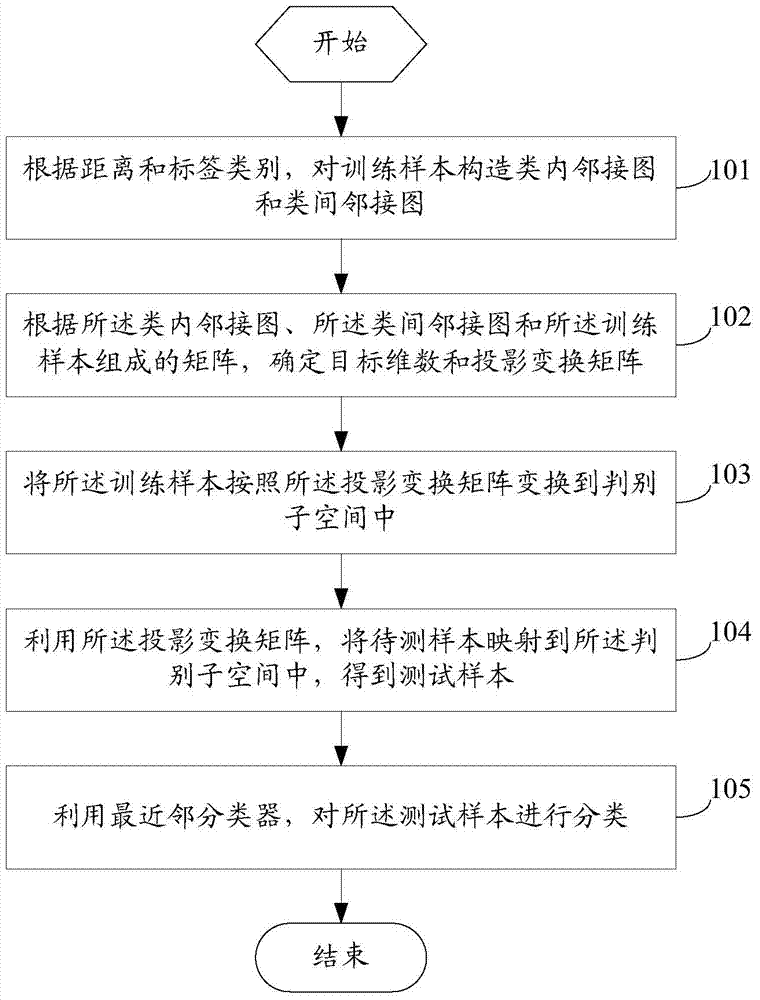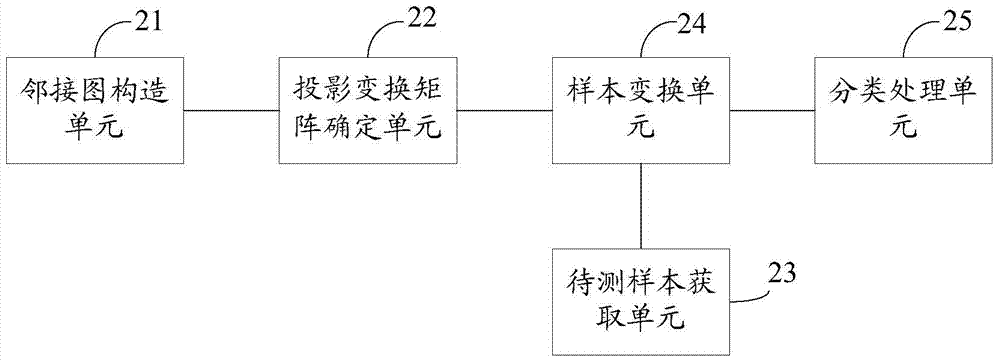Handwriting number identification method and system
A technology of digital recognition and handwriting, applied in the field of analog recognition, can solve problems such as unbalanced sample distribution, inability to maintain local structures in the adjacency graph, poor classification performance, etc., and achieve the effect of overcoming poor classification performance
- Summary
- Abstract
- Description
- Claims
- Application Information
AI Technical Summary
Problems solved by technology
Method used
Image
Examples
Embodiment 1
[0056] see figure 1 , figure 1 It is a flow chart of a method for recognizing handwritten digits disclosed in the embodiment of this application.
[0057] Such as figure 1 As shown, the method includes:
[0058] Step 101: Construct an intra-class adjacency graph and an inter-class adjacency graph for the training samples according to the distance and the label category;
[0059] Specifically, the intra-class adjacency graph is to find the nearest neighbor samples among the same samples, and the inter-class adjacency graph is to find the nearest neighbor samples among the heterogeneous samples.
[0060] Step 102: Determine the target dimension and projection transformation matrix according to the matrix composed of the intra-class adjacency graph, the inter-class adjacency graph and the training samples;
[0061] Specifically, in order to simplify the calculation, we project the training samples into a space with relatively low dimensions. This process requires determining ...
Embodiment 2
[0069] In this embodiment, the above steps will be described in detail.
[0070] (1) Construct the intra-class adjacency graph and the inter-class adjacency graph for the training samples in the original space according to the distance and label category, so as to maintain the relationship between the neighbors.
[0071] Specifically, the training sample set is defined as
[0072] where y i is x i The category label of , c represents the number of categories, N represents the total number of training samples, and d represents the dimensionality of the training samples.
[0073] Define the intra-class adjacency graph as F w :
[0074]
[0075] in with Respectively represent the sample x i and x j The set of similar neighbors of the same class, and x i with x j The categories are the same. Define the class-to-class adjacency graph as F b :
[0076]
[0077] in with Respectively represent the sample x i and x j The heterogeneous neighbor set of , and ...
Embodiment 3
[0099] see figure 2 , figure 2 It is a structural diagram of a handwritten digit recognition system disclosed in the embodiment of this application.
[0100] Such as figure 2 As shown, the system includes:
[0101] The adjacency graph construction unit 21 is used for constructing the intra-class adjacency graph and the inter-class adjacency graph to the training sample according to the distance and the label category;
[0102] A projection transformation matrix determination unit 22, configured to determine the projection transformation matrix and the target dimension according to the matrix formed by the intra-class adjacency graph, the inter-class adjacency graph and the training samples;
[0103] A sample to be tested acquisition unit 23, configured to acquire a sample to be tested;
[0104] A sample transformation unit 24, configured to transform the training samples into the discriminant subspace according to the projection transformation matrix, and map the sample...
PUM
 Login to View More
Login to View More Abstract
Description
Claims
Application Information
 Login to View More
Login to View More - R&D
- Intellectual Property
- Life Sciences
- Materials
- Tech Scout
- Unparalleled Data Quality
- Higher Quality Content
- 60% Fewer Hallucinations
Browse by: Latest US Patents, China's latest patents, Technical Efficacy Thesaurus, Application Domain, Technology Topic, Popular Technical Reports.
© 2025 PatSnap. All rights reserved.Legal|Privacy policy|Modern Slavery Act Transparency Statement|Sitemap|About US| Contact US: help@patsnap.com



